Jump to:
Why this recipe works
- A buttery, flaky, and sturdy short crust that's perfect in pies and free-standing tart recipes
- Can be used for sweet or savory recipes
- Includes a method for blind baking pastry dough without pie weights
What do pies, tarts, quiches, cheesecakes, and pie bars all have in common? If you answered they all have a pastry base, you'd be correct! Ok, technically some of those items don’t necessarily have to have a crust, but work with me here.
I have recipes for making a basic pie crust, using shortbread as a pie bar (aka slab pie) base, and graham-cracker crusts for cheesecake. It's now time to talk about how to make a shortcrust pastry.
This easy shortcrust pastry is buttery, flaky, and delicious. It's sturdy enough to hold up a large free-standing tart (like this chicken and broccoli quiche or spinach and ricotta quiche), and works well for personal-sized mini tarts.
Now that you have an easy shortcrust pastry recipe at hand, go and make a pie, tart, tartlets, or quiche with confidence!
Recipe Ingredients
You'll need the following ingredients to make this shortcrust pastry recipe:

Ingredient Notes
Since pie crust and shortcrust pastry are so closely related (see the FAQs for more), the ingredient list shouldn’t surprise you: flour, salt, and a fat.
Butter: The fat used in making shortcrust dough could be butter (my choice), vegetable shortening (like Crisco), lard (many people's choice), or something else entirely. I've seen recipes with coconut oil (to make it vegan), and I've used rendered beef or chicken fat on occasion (for savory dishes).
Egg yolk: The egg yolk adds sturdiness to the crust (as a binding agent) and richness without sacrificing flakiness.
Sugar: If you're making a sweet pie or tart, you can add 1 to 2 tablespoons of sugar (or to taste), if desired
Vinegar or lemon juice: Adding a little bit of acid helps tenderize the dough. Don't worry, you won't be tasting it so it won't matter which acid you choose.
By the way, if you're looking for ways to use a weekly sourdough starter discard, here's my recipe for sourdough shortcrust pastry. It's great for savory pies and tarts, adding a little extra touch of tang to your recipe.
See the recipe card for a full list of ingredients and measurements.
How to make shortcrust pastry
Step 1: Make a shaggy dough
In a large bowl, stir together the flour, sugar (if using), and salt.
Grate frozen butter with a box grater and toss it directly onto the flour mixture, mixing it up as you go. After all the butter is grated, use a pastry blender to cut it into the flour until coarse, pea-sized crumbs appear. If you prefer to use chilled butter instead of frozen, cut it into small cubes and toss it into the flour, then blend it into the flour as usual.
In a small bowl, whisk the ice water, egg yolk, and lemon juice or vinegar together. Add to the dough and mix until the dough just holds together (photo 1).

Turn dough out onto a lightly floured surface and push together into a rough ball. Knead a few times to combine. Squeeze a small amount of dough between your fingers. If it is very crumbly, add 1 to 2 tablespoons of ice water, 1 tablespoon at a time (photo 2).
Pastry Dough Tip
You can use a standing mixer fitted with the paddle attachment or a food processor to make the dough. Just be mindful to pulse the ingredients quickly so as not to overwork the dough. You want that butter to stay cold and to keep the flour from developing too much gluten so the crust will be flaky.
Divide the dough into two equal balls (keep it whole if you're making a large tart). Flatten each ball into a disk with smooth edges, cover with plastic wrap, and refrigerate at least 30 minutes or up to overnight. You want that butter to get cold again from all that manipulation.

Step 2: Roll out the dough
If you refrigerate the dough for more than 30 minutes, you may have to let it rest for a few minutes at room temperature before it will be soft enough to roll out.
Lightly dust your rolling surface with flour. Use even pressure to roll the dough out front to back and on the diagonals. Turn and loosen the dough occasionally as you continue to roll the pastry out into a circle about 2 inches larger than your pan with a thickness of approximately ¼-inch (about the height of two stacked quarters), unless otherwise directed by your recipe (photo 3).

Step 3: Transfer the dough to the pan
Transfer the dough to the pan you're using. Here I'm using a 9-inch tart pan.
Ease the crust into the pan, pressing up on the sides and leaving the dough overhanging the rim (photo 4). Don't forget to save the dough scraps to repair the crust later if needed.
- For a tart pan: Use your rolling pin to roll over the rim to create a neat edge.
- For a pie pan: Trim the overhang to 1-inch, then turn the overhang inward and crimp as desired.

How to blind bake the crust
You can successfully blind bake pie dough and shortcrust pastry without needing to use pie weights or dried beans using this frozen-foil method (photo 5).
- Prick the bottom of the crust all over with a fork.
- Tear off a piece of foil that fits over the entire pan with overhang (or add extra foil as needed).
- Spray the foil with baking spray to keep it from sticking to the dough.
- Press the foil into the pan and tightly up against the sides. Bring the foil up over the rim and mold it to the sides of the pan.
- Freeze the crust for 15 minutes.
- Bake the crust at 375˚F with the foil on for 20 minutes. At this point the crust is par-baked.
- Carefully remove the foil from the crust. If the crust has puffed up, gently press it back down. Any tears or cracks in the crust can be repaired with dough scraps. Return the crust to the oven and bake the crust until golden brown, 5 to 10 minutes more.
There you have it. No more slumping sides or messing around with dried beans. Oh, and the leftover egg white can be whisked with a teaspoon of water and a pinch of salt for use as an egg wash before par-baking. It won’t result in quite as golden a crust as a whole-egg wash, but it’s a great way to avoid waste.
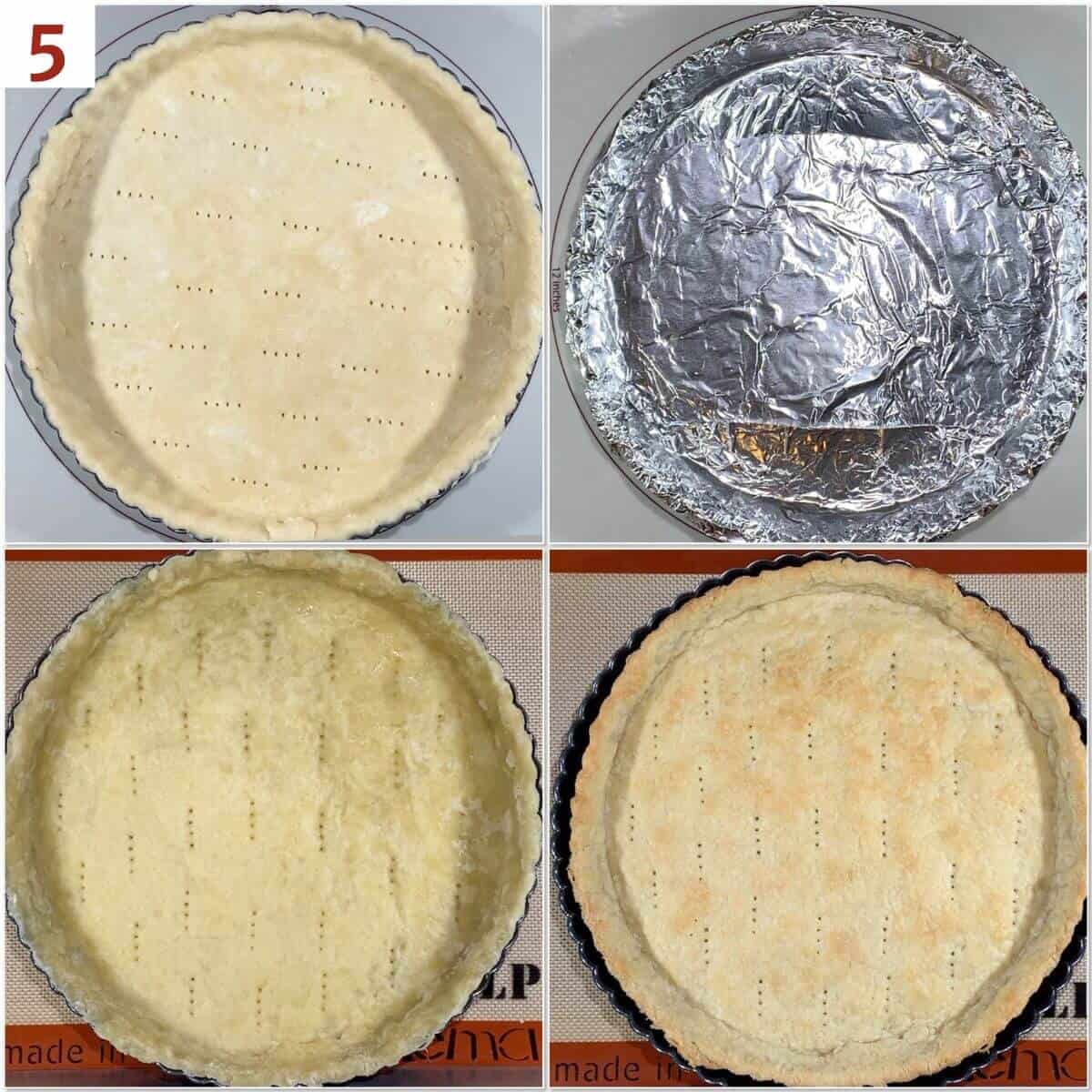
Storage instructions
Shortcrust pastry dough can be stored in the refrigerator after shaping into disks, wrapped in plastic wrap, for 2 to 3 days. For longer storage, place in an airtight bag and freeze for up to 3 months. Just defrost the dough overnight in the refrigerator before proceeding with rolling it out.
The dough can also be frozen directly in the pan, wrapped in plastic wrap and placed in an airtight bag. There's no need to defrost it before starting the blind baking process.
Yield Notes
Makes one 11-inch crust (with extra left over), two 8-inch crusts, or 48 mini crusts.
How to make mini tartlets
For mini tartlets (like these lemon tartlets and mini chocolate tarts), spray the cups of two mini muffin pans with baking spray. Roll out the chilled shortcrust pastry and cut rounds using a 2½-inch round cookie cutter. Using a pastry dough tart tamper, push the rounds into the muffin pan cups.
Chill the dough for 15 minutes in the freezer or 30 minutes in the refrigerator to firm up (you don’t want slumped tartlet shells). Bake for 10 minutes at 400°F for par-baked shells or 20 minutes for fully baked shells. Allow to cool before proceeding with filling.
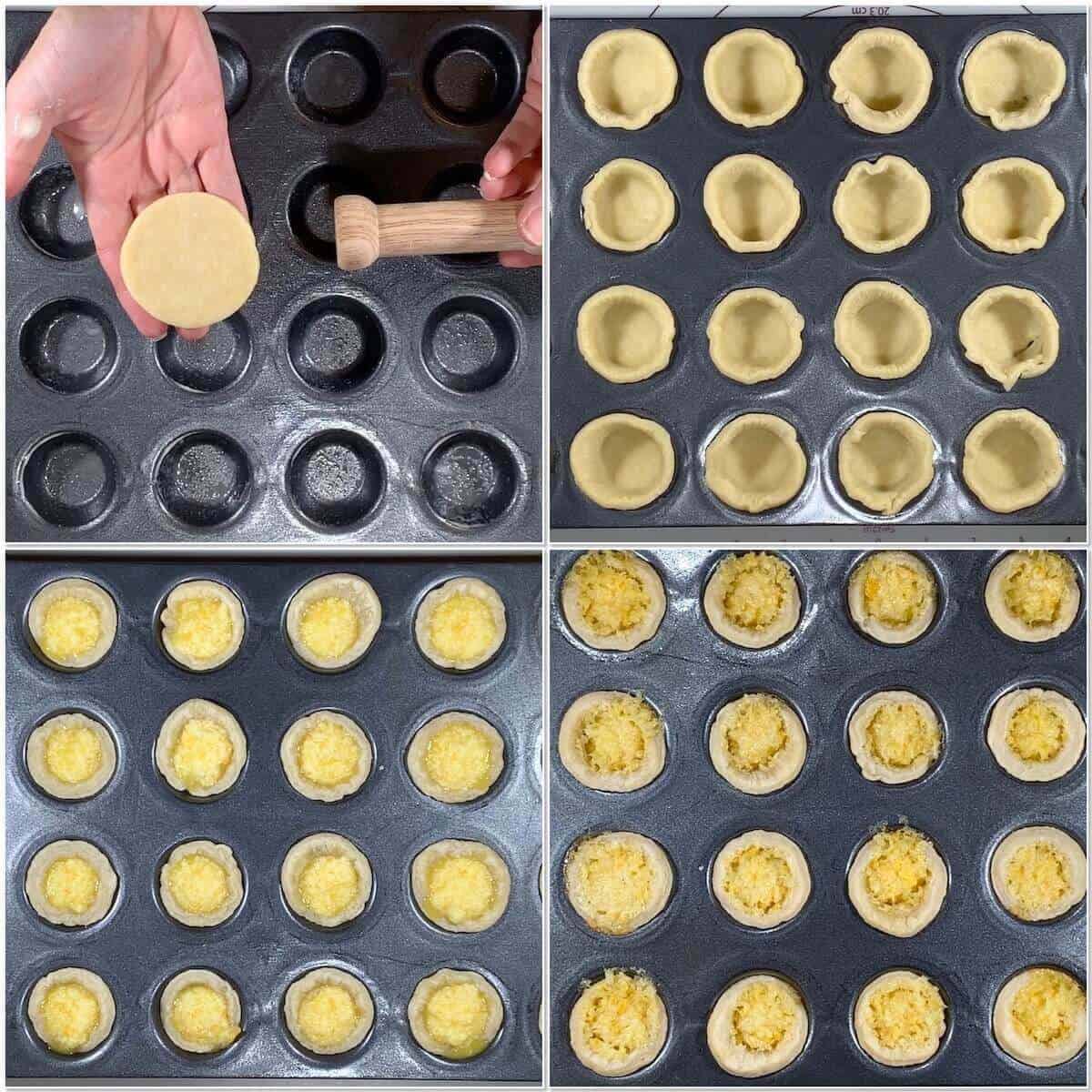
Questions asked and answered
Here are some questions you might have...
Shortcrust pastry (aka short crust pastry or just short pastry) at its core is an enriched pie crust - it has an egg whisked into the liquid before adding it to the flour and butter mixture. If “enriched” sounds familiar, that’s because we use the term to describe scones…they’re just enriched biscuits. And challah is enriched bread dough. I love parallelisms.
What enriching the pastry dough does is give it sturdiness. That’s why a tart can be released from a tart pan and still stand up, and a pie crust can’t. So, shortcrust pastry is used for any type of filled item that’s going to be free-standing. Think tarts, pasties (hand pies), quiches, and my personal favorite, mini tartlets (they’re just so darn cute!).
A good thickness starting point is approximately ¼-inch thickness, about the height of two stacked quarters. You can go thicker or thinner based on your recipe.
The best way to roll out shortcrust dough is to use even pressure and roll out from the center in all four compass directions, north, south, east and west. Turn and loosen the dough occasionally as you continue to roll the pastry out into a circle or square shape (unless, like me, you end up with a blob-shape).


More pie, tart, & cobbler recipes to try
Recipe

Shortcrust Pastry
Equipment
- rolling pin
Ingredients
- 3⅓ cups all-purpose flour
- 1 to 2 tablespoons granulated sugar, or to taste, optional
- 1½ teaspoons kosher salt
- 1 cup unsalted butter, frozen, see Recipe Notes
- ½ cup water, chilled with ice
- 1 large egg yolk
- 1 tablespoon lemon juice, white vinegar, or apple cider vinegar
- 1 to 2 tablespoons water, as needed
Instructions
- Measure your ingredients using a kitchen scale. It's the most accurate and will give the most consistent results.
- In a large bowl, stir together the flour, sugar (if using), and salt.
- Grate the frozen butter with a box grater and toss it directly onto the flour mixture, mixing it up as you go. After all the butter is grated, use a pastry blender to cut it into the flour until coarse, pea-sized crumbs appear. Set aside.
- Whisk the ice water, egg yolk, and lemon juice or vinegar together. Add to the dough and mix until the dough just holds together.
- Squeeze a small amount of dough between your fingers. If it is very crumbly, add some ice water, 1 tablespoon at a time (2 tablespoons maximum). Try not to over mix the dough. You want to keep that butter cold and separate from the flour. Don't worry if the dough has a slight lemony or vinegary smell. That will dissipate during baking and/or be overwhelmed by the filling.
- Turn dough out onto a lightly floured surface and push together into a rough ball. Knead a few times to combine, then divide into two equal balls (keep it whole if you're making a large tart). Flatten each ball into a disk with smooth edges, cover with plastic wrap, and refrigerate at least 30 minutes or up to overnight. If you refrigerate the dough for more than 30 minutes, you may have to rest it for a few minutes at room temperature before it will be soft enough to roll out.
- Lightly dust your rolling surface with flour. Use even pressure to roll the dough out front to back and on the diagonals. Turn and loosen the dough occasionally as you continue to roll the pastry out into a circle about 2 inches larger than your pan with a thickness of approximately ¼-inch (about the height of two stacked quarters), unless otherwise directed by your recipe.
- Transfer the dough to the pan you're using. Ease the crust into the pan, pressing up on the sides and leaving the dough overhanging the rim.
- For a tart pan: Use your rolling pin to roll over the rim to create a neat edge.For a pie pan: Trim the overhang to 1-inch, then turn the overhang inward and crimp as desired.
- Continuing: Save the dough scraps to repair the crust later if needed. Prick the bottom all over with a fork.
- To blind bake the crust: Preheat the oven to 375 °F. Tear off a piece of foil that fits over the entire pan with overhang (or add extra foil as needed). Spray the foil with baking spray to keep it from sticking to the dough. Press the foil into the pan and tightly up against the sides. Bring the foil up over the rim and mold it to the sides of the pan. Freeze the crust for 15 minutes. You don't need to use pie weights or dried beans using this frozen-foil method.
- Bake the crust with the foil on for 20 minutes. At this point the crust is par-baked.
- Carefully remove the foil from the crust. If the crust has puffed up, gently press it back down. Any tears or cracks in the crust can be repaired with dough scraps. Return the crust to the oven and bake the crust until golden brown, 5 to 10 minutes more.
- The crust is now ready to be filled and baked as desired.
- Storage instructions: Shortcrust pastry dough can be stored in the refrigerator after shaping into disks, wrapped in plastic wrap, for 2 to 3 days. For longer storage, place in an airtight bag and freeze for up to 3 months. Just defrost the dough overnight in the refrigerator before proceeding with rolling it out.The dough can also be frozen directly in the pan, wrapped in plastic wrap and placed in an airtight bag. There's no need to defrost it before starting the blind baking process.
- Makes one 11-inch crust (with extra left over), two 8-inch crusts, or 48 mini crusts.



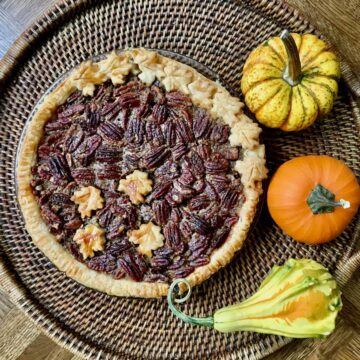



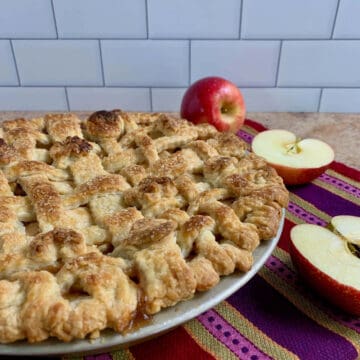

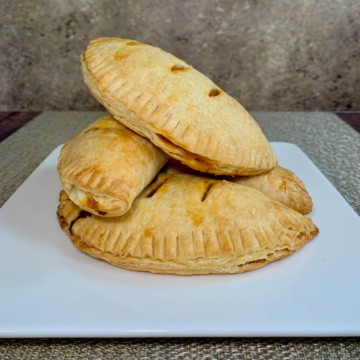



Comments
No Comments